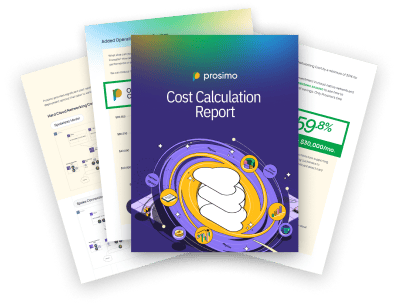With over 90% of organizations relying on cloud computing, managing cloud costs has become a significant challenge despite the numerous benefits it offers. The pay-as-you-go model, while flexible, can often lead to unforeseen expenses if not handled properly. Many companies experience budget overruns due to uncontrolled cloud spending, making it essential to carefully monitor cloud usage and align it with actual needs. Failing to do so could result in cloud expenses consuming a large portion of your budget, impacting overall financial stability.
To tackle this issue effectively, businesses need to adopt a strategic approach to cloud cost management. Here are some key strategies to ensure your cloud investment yields maximum value:
- Optimize Major Cost Drivers: Focus on optimizing critical cost areas such as compute resources, storage, and data transfer. Analyze and adjust these components regularly to prevent unnecessary expenditures.
- Right-Size Your Resources: Continuously assess and right-size your cloud resources to match your current needs. Avoid over-provisioning, which can lead to wasted resources and increased costs.
- Implement Continuous Monitoring: Use monitoring tools to track usage patterns and costs in real-time. This allows you to identify and address cost anomalies quickly, ensuring that your cloud spending remains in check.
By following these strategies, you can effectively manage cloud costs, allowing your organization to maximize the value of its cloud investment while maintaining a balanced budget. Implementing these best practices will not only reduce costs but also enhance overall operational efficiency.

Navigating Cloud Costs: Simplifying Complex Pricing Models
The intricacies of cloud pricing models and billing structures can be overwhelming for organizations and decision-makers as they explore the cloud landscape. With a wide array of choices from different providers—including pay-as-you-go options, reserved instances, and custom pricing agreements—understanding the nuances of each model can feel like a daunting task.
Beyond the models themselves, the challenge intensifies due to the granular billing details associated with specific services such as compute, storage, and data transfer. Each of these services comes with its own unique pricing tiers and conditions, making it crucial to have a deep understanding of these variables to manage costs effectively and avoid unexpected expenses.
To navigate this complexity, it’s essential to not only comprehend the pricing structures but also to regularly review your usage and align your resource allocation with your organization’s needs.
Compute
represents the processing power necessary to run applications and services in the cloud, making it one of the most significant expenses in cloud deployments. It includes the number of virtual machines (VMs) or instances used, their specifications—such as CPU and memory—and the duration they are operational. Essentially, the more processing power and time you require, the higher the cost.
Storage costs
are tied to the amount of data stored in the cloud and the length of time it remains there. The choice of storage class, such as standard, infrequent access, or archive, plays a crucial role in determining costs. Policies for data retention and deletion also significantly impact expenses, making it important to regularly review and optimize storage use.
Data transfer
involves the cost of moving data in and out of the cloud environment. This can rapidly become a substantial expense, particularly for businesses that frequently transfer data between on-premises systems and the cloud, or across different cloud regions or services. High data movement requirements can lead to unexpected cost spikes, complicating budget management.
The complexity and variability of these costs often lead to unpredictability in monthly cloud expenses, making financial planning and budgeting challenging for organizations. By focusing on optimizing these three core components—compute, storage, and data transfer—you can not only reduce cloud expenditures but also improve the efficiency and effectiveness of your organization’s use of cloud technologies.

Common Cloud Cost Challenges: Avoiding the Pitfalls
Managing cloud costs effectively requires a deep understanding of pricing structures and careful oversight. Without these, organizations often end up over-provisioning resources or missing opportunities to optimize their cloud spend, leading to inflated costs. These unnecessary expenses usually arise from several common challenges that many businesses face while implementing cloud strategies.
Among these factors, over-provisioning, underutilization, and lack of visibility are the primary contributors to unnecessary cloud spending:
Over-Provisioning
Over-provisioning happens when organizations allocate more cloud resources—whether it’s compute power, storage, or additional services—than their workloads actually require. This practice often stems from a cautious approach to ensure that applications perform optimally under all conditions, including peak demand periods. While this may prevent performance issues, it frequently results in many resources remaining idle or significantly underutilized.
The consequence is that businesses end up paying for capacity they don’t need, leading to inflated cloud costs without any proportional increase in value or performance. By accurately assessing your workload needs and adjusting resource allocation accordingly, you can prevent over-provisioning and optimize cloud spending effectively.
Underutilization
Underutilization occurs when cloud resources that have been allocated are not fully utilized. While it is closely related to over-provisioning, underutilization specifically addresses the inefficiency in using the resources that are already in place. This means that although the capacity exists and is paid for, it is not being effectively leveraged to generate business value.
For example, you may have instances running with high specifications, but they consistently operate at a fraction of their potential capacity. This results in organizations incurring costs for resources that aren’t delivering the expected performance or benefits. By regularly evaluating and right-sizing these resources, businesses can ensure they are getting the most value from their cloud investment and avoid unnecessary expenses.
Lack of Visibility
Lack of visibility into cloud usage and spending is a major factor that leads to inflated cloud costs. Without clear insights into which resources are being utilized, by whom, and for what purpose, effectively managing and optimizing cloud expenditures becomes an uphill battle. This obscurity often results in both over-provisioning and underutilization, as decision-makers lack the crucial data needed to align resources with actual business needs.
This issue is widespread—studies indicate that only 3 out of 10 organizations have a clear understanding of where their cloud budget is being allocated. This lack of transparency not only hampers cost control but also stifles the ability to make informed decisions regarding resource allocation and usage.
To address these challenges, organizations need a comprehensive approach to cloud cost management. This includes implementing the right tools and processes to monitor usage in real-time, promoting a culture of cost awareness, and continuously optimizing cloud resources. By enhancing visibility and fostering a proactive approach, businesses can achieve more efficient and cost-effective cloud operations.

Smart Strategies for Cloud Cost Reduction
Given the substantial challenges that cloud costs pose to an organization’s efficiency and bottom line, implementing smart strategies for cloud cost reduction is essential. Effective cost management not only ensures optimal utilization of resources but also significantly cuts down on unnecessary expenditures, streamlining overall operational costs.
Here are some key strategies to consider:
Right-Sizing
Right-sizing involves adjusting your computing resources to precisely match the workload requirements, ensuring optimal performance without over-provisioning. This process entails a thorough analysis of the usage patterns and demands of your applications to choose the most suitable size and type of instances.
By selecting the right combination of CPU, memory, and storage for your workloads, you can avoid paying for excess capacity that isn’t being utilized. This not only prevents unnecessary cloud expenses but also enhances the efficiency of your cloud infrastructure. Regularly evaluating and right-sizing resources is a key strategy for achieving significant cost savings while maintaining the performance and reliability of your applications.
Opting for Lower-Cost Options
Choosing lower-cost options, such as reserved instances and savings plans, allows organizations to commit to a certain level of cloud usage in exchange for substantially reduced pricing compared to on-demand rates. By committing to a one-year or three-year term, you can significantly lower your compute costs.
These options are particularly beneficial for workloads with predictable usage patterns. In exchange for upfront payment or a long-term commitment, you gain access to lower rates, leading to substantial cost savings over time. This strategy is ideal for stable applications and services that require consistent, ongoing cloud resources, helping to optimize spending and improve budget predictability.
Eliminating Cloud Waste
Identifying and eliminating cloud waste is essential for keeping cloud costs under control. Regularly auditing your cloud environment helps pinpoint unused or underutilized resources, such as idle virtual machines, outdated snapshots, and unnecessary storage. By removing these excess resources, you can immediately reduce costs and ensure that you’re only paying for what your organization genuinely needs.
This proactive approach not only saves money but also streamlines your cloud operations, making your environment more efficient and easier to manage. Regular clean-ups and a well-defined policy for resource usage can prevent cloud sprawl and help maintain an optimized and cost-effective cloud infrastructure.
Smart Management with Metadata
Tagging and resource management are powerful techniques for effectively organizing and tracking cloud resources. By implementing a consistent tagging strategy, your organization can assign metadata to resources, such as virtual machines, storage buckets, and databases, categorizing them by department, project, or application.
This practice enhances visibility, making it much easier to monitor and manage usage and costs across different teams and initiatives. With clear tags in place, you can generate detailed reports that provide insight into spending patterns, enabling more accurate billing and helping to identify areas for potential cost optimization. Smart use of metadata not only improves financial transparency but also facilitates better decision-making and resource allocation.
Automate Where You Can
Automating cost optimizations utilizes technology to minimize manual effort and ensure effective cloud cost management. Here are some key automation strategies:
- Auto-Scaling: Configure auto-scaling to automatically adjust resources based on real-time demand. This ensures you’re only using what you need, preventing over-provisioning and reducing costs during low-demand periods.
- Automated Shutdowns: Implement scripts to identify and shut down unused or idle instances, preventing unnecessary charges for resources that are not actively contributing to your operations.
- Cloud Management Platforms: Use advanced cloud management platforms to continuously monitor and optimize resource allocations. These tools can automatically right-size instances, delete outdated snapshots, and apply cost-saving recommendations without manual intervention.
Automation not only cuts down on expenses but also guarantees that cost-saving measures are applied consistently across your entire cloud environment. This proactive approach helps maintain an optimized and efficient cloud infrastructure, freeing up your team to focus on strategic initiatives.

Implementing Effective Cloud Cost Management Practices
While tactical approaches help in reducing immediate cloud costs, sustainable cost management requires a strategic framework built on broader practices and principles. Here are some key components of an effective cloud cost management strategy:
Cloud Center of Excellence (CCoE)
Establishing a Cloud Center of Excellence (CCoE) is a foundational practice in effective cloud cost management. The CCoE is a cross-functional team composed of experts from various departments, such as IT, finance, and operations, who collaboratively set best practices, governance, and standards for cloud usage across the organization.
This central body ensures that cloud strategies are aligned with business objectives and provides guidance to all departments on how to leverage cloud technologies efficiently. By fostering collaboration between IT and finance, the CCoE creates a comprehensive view of cloud spending, helping to track and optimize costs while ensuring that cloud investments deliver maximum value to the organization.
Key responsibilities of a CCoE include:
- Defining Cloud Governance Policies: Establish rules and guidelines for cloud usage, access control, and security policies to maintain consistency and compliance across all departments.
- Implementing Best Practices: Develop and promote best practices for resource allocation, cost management, and cloud architecture to optimize performance and spending.
- Enhancing Visibility and Reporting: Provide clear visibility into cloud usage and spending by implementing monitoring and reporting tools. This enables better financial planning and more informed decision-making.
- Facilitating Training and Education: Educate teams about cloud cost management and optimization techniques, ensuring all stakeholders are equipped to make cost-effective decisions.
- Promoting Continuous Improvement: Regularly review cloud strategies and practices to identify areas for improvement, incorporating feedback and industry developments to stay ahead in cloud management.
By establishing a CCoE, organizations can create a unified approach to cloud management, driving efficiency, cost savings, and innovation across all cloud operations.
FinOps
Cloud Financial Management, or FinOps, is a vital practice that integrates financial accountability into the dynamic and variable spend model of cloud computing. It bridges the gap between finance, technology, and business teams by embedding financial management principles into the day-to-day operations of cloud environments. This approach allows organizations to balance speed, cost, and quality, ensuring cloud investments are both efficient and strategic.
Key elements of FinOps include:
- Financial and Business Metrics Integration: FinOps brings financial insights into the operational aspects of cloud usage, such as tracking cost per project, application, or team. This enables organizations to understand the financial impact of their cloud activities and make data-driven decisions.
- Cost Transparency and Accountability: By fostering a culture of transparency, FinOps helps teams understand their cloud costs in real-time. Teams can track their own spending and see the impact of their decisions, promoting responsible usage and reducing unnecessary expenses.
- Optimizing Cloud Spend: FinOps provides actionable insights and recommendations for cost optimization, such as identifying underutilized resources, choosing the right pricing models, and implementing cost-saving measures like auto-scaling and reserved instances.
- Balancing Speed and Control: FinOps allows organizations to move quickly with cloud adoption while maintaining control over costs. By setting guardrails and guidelines, it ensures that financial management is not a bottleneck but an enabler of efficient cloud operations.
- Fostering Collaboration Across Teams: FinOps promotes collaboration between finance, technology, and business units, aligning their goals and ensuring that cloud investments support overall business objectives.
By embedding financial management practices into cloud operations, FinOps enables organizations to optimize their cloud spending while encouraging innovation and growth. This strategic approach not only enhances cost efficiency but also empowers teams to leverage cloud resources effectively, driving better business outcomes.
Ongoing Maintenance and Management
Cloud management is not a one-time or periodic activity—it requires continuous attention and optimization to maintain efficiency and prevent overspending. Regularly reviewing and adjusting cloud resources is essential to ensure they remain aligned with your organization’s evolving needs and goals. This involves several key practices:
- Leveraging Visibility Tools: Utilize advanced tools and technologies to gain real-time insights into your cloud operations. These tools provide a comprehensive view of resource usage, costs, and performance, enabling data-driven decisions.
- Identifying Underutilized Resources: Continuously monitor your cloud environment to detect underutilized or idle resources. Identifying and eliminating these resources can prevent unnecessary expenses and improve overall cost efficiency.
- Optimizing Configurations: Regularly assess and optimize configurations for both performance and cost. This includes right-sizing instances, choosing the appropriate storage options, and implementing cost-effective networking configurations.
Continuous monitoring enables your organization to respond swiftly to changes in demand, capitalize on cost-saving opportunities, and avoid over-provisioning. By making optimization an ongoing process, you ensure that your cloud environments are consistently aligned with your current needs and strategic objectives.
Together, these practices form the backbone of effective cloud cost management. They provide a strategic framework focused on reducing costs while maximizing the value derived from cloud investments. By integrating these continuous maintenance and management practices, your organization can achieve a sustainable balance between innovation, operational efficiency, and financial prudence throughout your cloud journey.
Keeping Your Cloud Budget in Check
Successfully managing your cloud budget requires a multifaceted approach that combines tactical strategies with broader organizational practices. This comprehensive perspective enables your business to harness the full potential of cloud computing while maintaining financial control and efficiency.
Tactical Strategies: Implement cost-saving measures such as right-sizing resources, eliminating cloud waste, and leveraging automation to continuously optimize your cloud environment. Utilize reserved instances and savings plans for predictable workloads, and adopt monitoring tools to maintain real-time visibility into usage and spending.
Organizational Practices: Establish a Cloud Center of Excellence (CCoE) to set governance standards, promote best practices, and foster collaboration across departments. Integrate FinOps to bring financial accountability into cloud operations, ensuring that cost management is an integral part of your cloud strategy.
This holistic approach empowers your organization to transform cloud investments into strategic assets, driving innovation and growth while keeping costs under control. By aligning your cloud strategy with business goals and maintaining ongoing optimization, you can achieve a sustainable balance between technological advancement and financial prudence, ultimately delivering real value to your organization.
Conclusion
Effective cloud cost management is not just about cutting expenses—it’s about strategically optimizing your cloud environment to maximize value and support business growth. By adopting a holistic approach that integrates tactical cost-saving measures with broader organizational practices like establishing a Cloud Center of Excellence (CCoE) and implementing FinOps, your organization can achieve a sustainable balance between innovation and financial efficiency. This comprehensive strategy enables you to turn cloud investments into powerful assets that drive innovation and operational excellence while maintaining robust financial control. With continuous optimization and a culture of cost awareness, your organization can fully leverage the benefits of cloud computing while keeping costs in check and aligning with long-term business goals.
Frequently Asked Questions (FAQs)
- What are the key strategies for reducing cloud costs? Key strategies include right-sizing resources, leveraging reserved instances and savings plans, automating cost management, and eliminating unused or underutilized resources.
- How can I prevent over-provisioning in my cloud environment? Regularly review and assess your cloud usage, implement auto-scaling, and use monitoring tools to adjust resource allocation based on actual needs.
- What is FinOps, and how does it help with cloud cost management? FinOps is a financial management practice that integrates financial accountability into cloud operations. It helps organizations track cloud spending, optimize costs, and make informed investment decisions.
- Why is continuous monitoring important for cloud cost management? Continuous monitoring provides real-time insights into usage and costs, enabling quick responses to changes in demand, identification of cost-saving opportunities, and prevention of over-provisioning.
- What is a Cloud Center of Excellence (CCoE), and why is it important? A CCoE is a cross-functional team that sets cloud governance, best practices, and standards. It ensures efficient cloud usage, aligns strategies with business goals, and maximizes the value of cloud investments.
